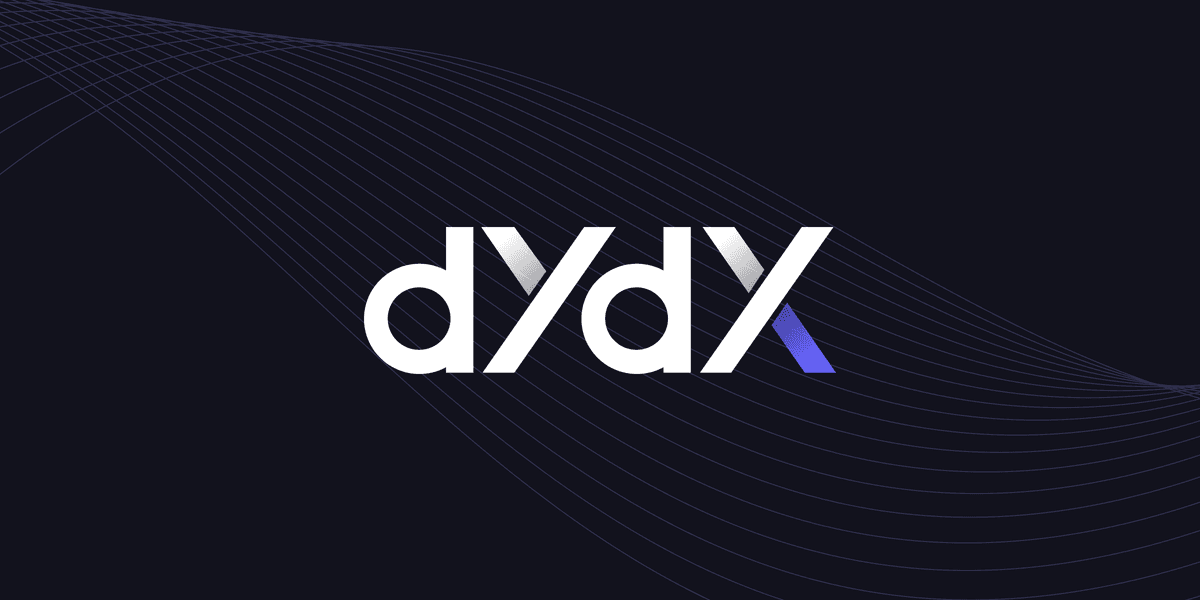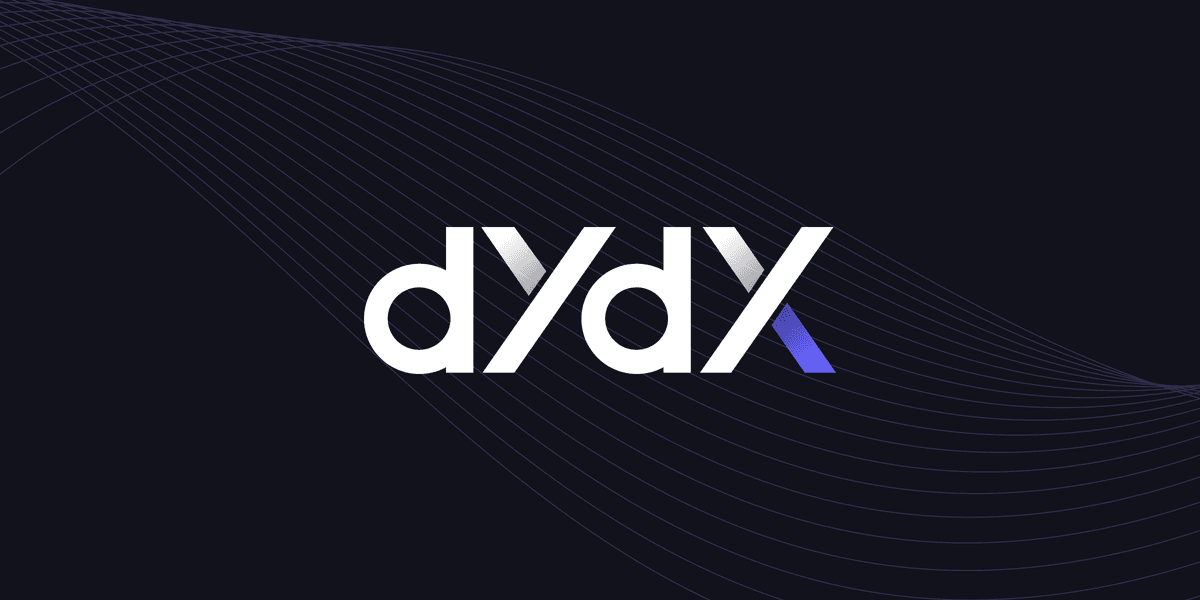Key Takeaways
- Cosmos Integration: dYdX migrated to a dedicated Cosmos-based blockchain, enhancing scalability and decentralization.
- Cross-Chain Partnerships: Collaborations with Circle, Noble, and Osmosis provide seamless USDC transfers and liquidity sharing within the Cosmos ecosystem.
- Orderbook Model: dYdX employs an off-chain orderbook and on-chain settlement for efficient, low-slippage trading.
- Growing Ecosystem: Partnerships with projects like Stride and Axelar expand dYdX's reach and functionality.
- Future Roadmap: Focused on core trading improvements, permissionless markets, and enhanced user experience.
Introduction to the dYdX Ecosystem
Initially designed in 2017 as a blockchain operating on Ethereum, dYdX launched its Layer 2 platform with Starkware in April 2021 to support the infrastructure needed to launch dYdX v3.
Then in June 2022, dYdX announced its plans to develop a Cosmos-based blockchain exclusively for decentralized derivatives and perpetuals trading. Finally, in October 2023, dYdX Chain officially launched on the Cosmos network as the infrastructure that would provision the release of dYdX v4 a month later.
The recently launched dYdX Chain allows the protocol to be completely interoperable with the Cosmos ecosystem and its many blockchains. For many, the launch as a Cosmos-enabled chain is considered a game-changer for dYdX because it opens up vast accessibility to liquidity sharing through its newfound connectivity to both the Cosmos and Celestia ecosystems.
In addition to its vast user base, this development has the potential to help increase the overall liquidity and number of holders of the DYDX token, marking an important step in the ecosystem's long-term adoption and evolution.
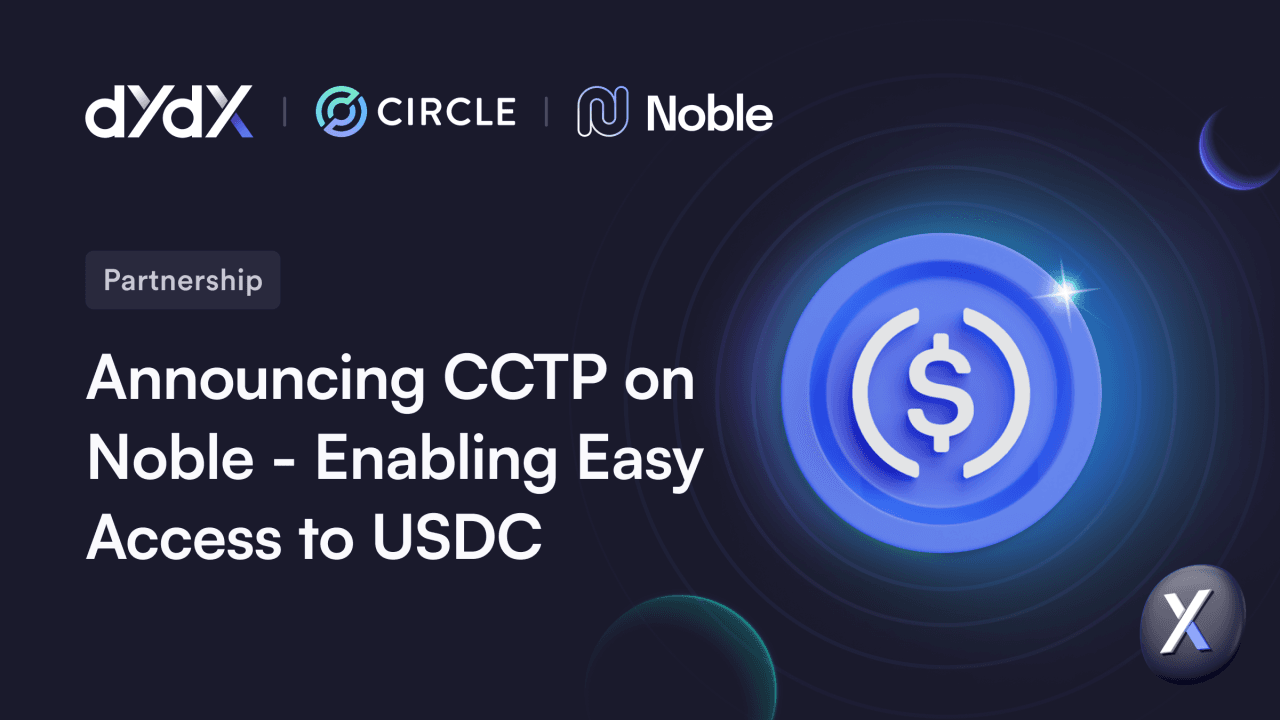
Since its Cosmos launch, dYdX has continued to integrate with a vast number of new chains and infrastructure providers within the Cosmos ecosystem. Some of its most notable partnerships include:
- Osmosis - a widely-used decentralized exchange (DEX) built atop the Cosmos network, Osmosis features swapping, trading, staking, and full integration with Cosmos’ Keplr wallet.
- Kado - a fiat on-ramp partner that enables multiple user-payment methods that allow for the exchange of fiat to crypto. Kado is used by crypto enterprises as an API-as-a-service platform, allowing enterprises to integrate its on-ramp functionalities into their respective services.
- Noble - connected to dYdX and all blockchains within the Cosmos ecosystem as the liquidity connectivity layer for the USDC stablecoin. Noble is fully integrated with Keplr and Circle's Cross-Chain Transfer Protocol (CCTP) to provide increased accessibility to USDC on dYdX.
- Squid Router - an interoperability and token exchange liquidity aggregator operating on Axelar that allows for asset connectivity between more than 60 blockchains.
- Coinbase Custody - one of the world’s most reputable exchanges and custodial providers, Coinbase Custody allows users to hold their assets securely should the need arise.
- Skip Protocol - an infrastructure service protocol that provides various APIs to realize cross-chain interoperability between chains while also offering a restaked oracle service and MEV recapture services for DeFi protocols.
- Stride - the premier Cosmos liquid staking protocol, Stride allows users to stake liquid staking asset stride tokens, or stTokens (such as stTIA, stATOM, and stINJ), while enabling on-chain participation in various DeFi primitives.
- Axelar - a Cosmos-based interoperability protocol that allows for the connectivity to 50+ blockchains while also offering various chains, dApps, and protocols out-of-box APIs to connect various required services in a simple and efficient manner.
In addition to the above partnerships and others, after the combined effort to build the Starkware-dYdX Layer 2 protocol as the underpinning technology for dYdX v3, dYdX continues to have a strong relationship with Starkware. Starkware’s pioneering zkSTARK (Zero-Knowledge Scalable Transparent Argument of Knowledge) cryptographic proof scaling technology, along with its Starknet and StarkEx protocols, have become a force to be reckoned with in the industry.
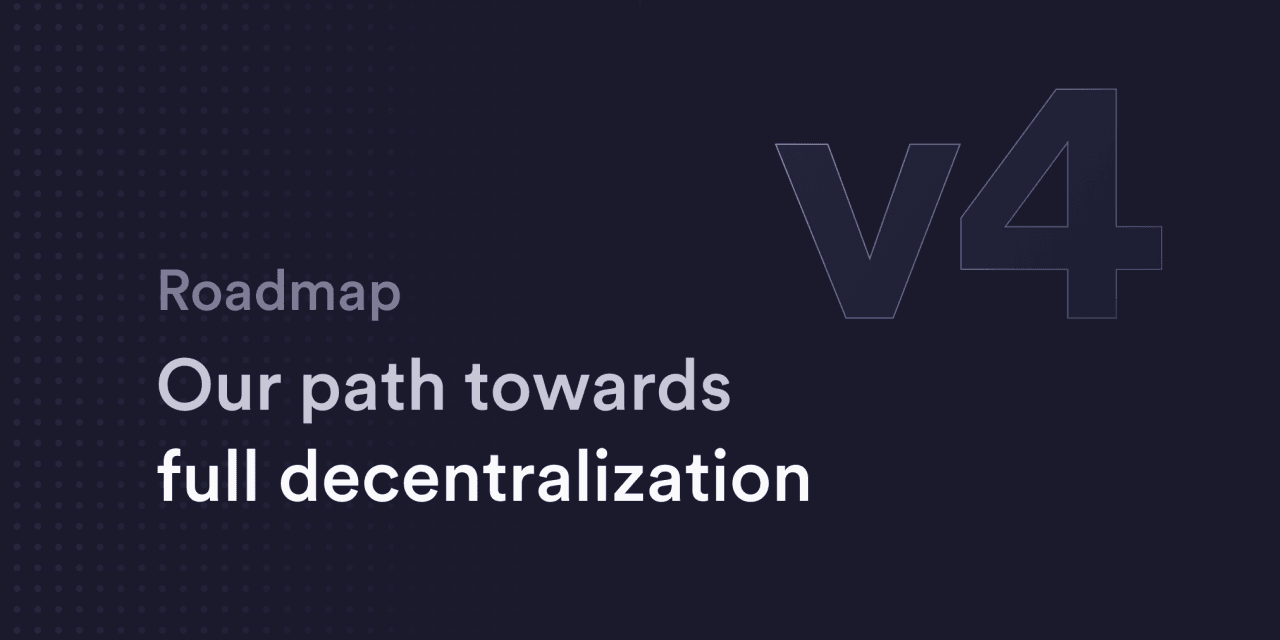
dYdX Roadmap
Since its founding in 2017, dYdX has evolved from a basic early-stage start-up to become one of the most widely used decentralized exchanges in the world. Looking back, let’s look at the chronological series of events dYdX has undertaken over the past 7 years:
- July 2017 - dYdX is solo founded by CEO Antonio Juliano
- December 2017 - dYdX raises 2 million via its seed funding round
- Spring 2018 - dYdX launches the first version of its margin trading protocol
- September 2018 - dYdX launches Expo on top if its initial margin trading protocol
- October 2018 - dYdX raises 10 million via its Series A funding round
- Q1 2019 - dYdX launches Solo, the second version of the dYdX margin trading platform
- April 2019 - dYdX launches a new margin exchange that supports lending and borrowing functionality
- September 2019 - dYdX launches its in-house orderbook using an off-chain matching system
- April 2020 - dYdX launches a perpetual contract market for bitcoin (BTC), with ether (ETH) and chainlink (LINK) soon to follow
- January 2021 - dYdX raises 10 million via its Series B funding round
- April 2021 - after 7 months of development, dYdX launches its Starkware-partnered Layer 2 blockchain (using zkSTARK privacy-preserving scaling technology) as a means to host its production-ready version of dYdX v3
- June 2021 - dYdX raises 65 million via its Series C funding round
- August 2021 the dYdX Foundation and the ERC-20 ethDYDX token are born
- September 2021 - trading of the ERC-20 ethDYDX token goes live for the first time
- June 2022 - dYdX announces the development of its Cosmos-SDK-enabled dYdX Chain and its new native DYDX token, with plans for a revamped governance system and other improvements upon launch
- August 2023 - a recent dYdX community governance vote initiates the migration of its ERC-20 ethDYDX and wethDYDX tokens to become the newly launched native DYDX asset (the token migration is currently still in progress via the wethDYDX bridge contract)
- October 2023 - the newly developed Cosmos-based dYdX Chain launches on mainnet
- November 2023 the new dydX exchange (dYdX v4) goes live on dYdX Chain
To learn more about the history of dYdX and the above milestones in more detail, consider reading our introductory dYdX article that discusses these topics and more.
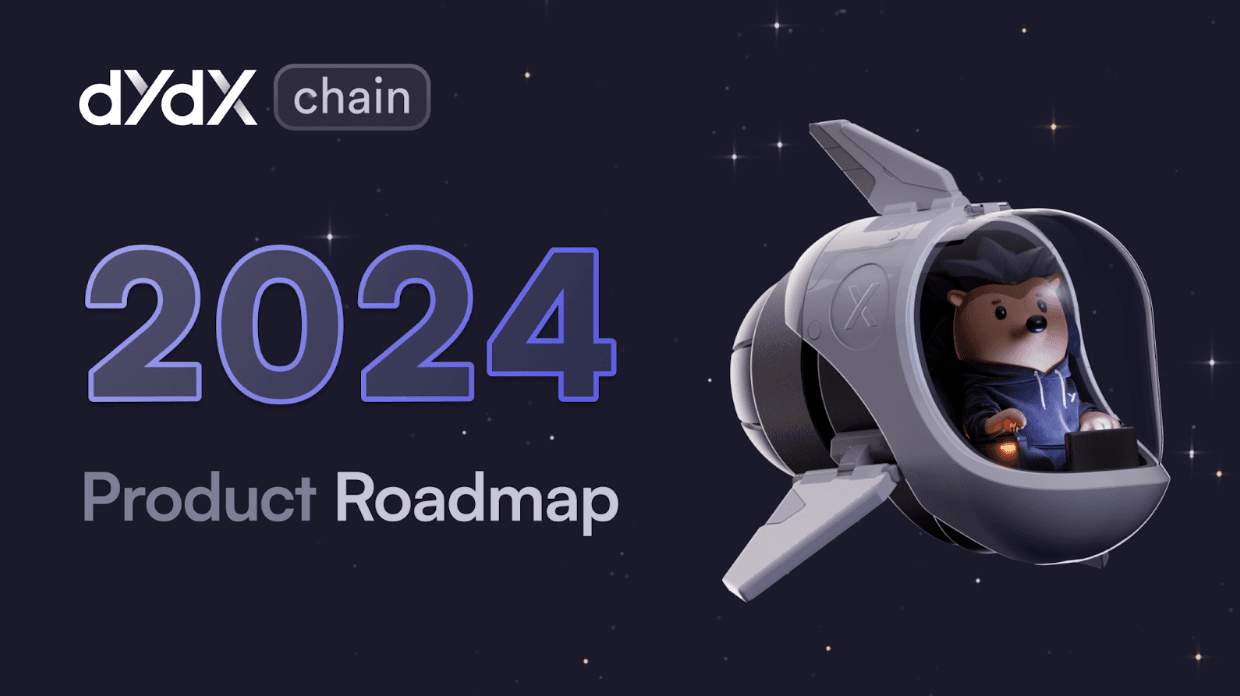
The 2024 dYdX Chain product roadmap is focused on several main improvements to further streamline and improve the chain in a variety of ways. For 2024, this continuous initiative is especially focused on optimizing core trading improvements, UX/onboarding upgrades, and the creation of a more permissionless market infrastructure. (Image Credit: 2024 Product Roadmap via the dYdX blog)
2024 Product Roadmap
As is outlined in the project’s 2024 product roadmap blog post, dYdX is striving towards several software-focused initiatives to help improve the dYdX platform in 2024. To accomplish these goals, the developers of dYdX will focus primarily on three main areas:
- Core trading improvements: A main focus for dYdX in 2024 will be to significantly improve the exchange’s performance by continuously enhancing its CEX-like trading experience via its fully non-custodial decentralized design. This will include continued improvement in the reliability and infrastructure of the exchange software by adding new trading features that allow traders to execute their trades more quickly and accurately, while adding additional support for clients in the Rust, C++, and Go programming languages.
- Permissioness markets: One of the main goals of the dYdX platform is to eventually allow users to automatically add any market in existence (at this time all added markets must go through a governance vote) to the platform provided there is an oracle price for that particular asset that exists on the internet. In addition, the protocol will be designed to offer instant liquidity via LP Vaults to enable sufficient liquidity for all markets. The platform will also enable the use of cross-margin and isolated-margin at the protocol-level to provide better risk management for traders.
- UX/onboarding upgrades: Similarly to many crypto-based businesses today, ease of use is paramount to ensure continued adoption and user growth long-term. On dYdX this will include seamless connectivity between an increasing number of fiat on-ramps that are fully compatible with Ethereum and dYdX Chain wallets. This will allow users to add USDC to their wallet from a CEX such as Coinbase with a few simple clicks. Additionally, dYdX envisions their platform to be connected to social media platforms such as Twitter, Discord, and others (via a single click) to improve community interaction and trading availability for all.
If you're interested in learning more on the technical architecture of dYdX and what makes it special, feel free to read our technical deep dive that also goes over dYdX governance and economics.
Comparative Exchange Analysis
Since its inception in 2017, dYdX has become a pioneer in the DeFi space with its offering of decentralized permissionless perpetuals trading.
After the continued development of its Cosmos SDK-enabled dYdX Chain and its recent integration into the Cosmos ecosystem, dYdX has positioned itself for continued growth in the months and years ahead.
Although the AMM model is popular in DeFi as a means to develop decentralized exchanges, dYdX itself does not employ the AMM paradigm. Instead, it leverages an off-chain orderbook model to provide a user-friendly and efficient trading experience.
By combining an off-chain orderbook and matching engine with an on-chain settlement layer, dYdX is able to provide traders with a highly performant, fast, low slippage platform capable of executing trades amongst a wide range of perpetual contracts without forgoing the benefits of user-controlled self-custody and decentralization.
Below, we'll compare dYdx to perpetual exchanges GMX, Hyperliquid, and Aevo and discuss the differences between each exchange type to support the notion that dYdX is a more viable alternative long term. Without further adieu, let’s get into it.
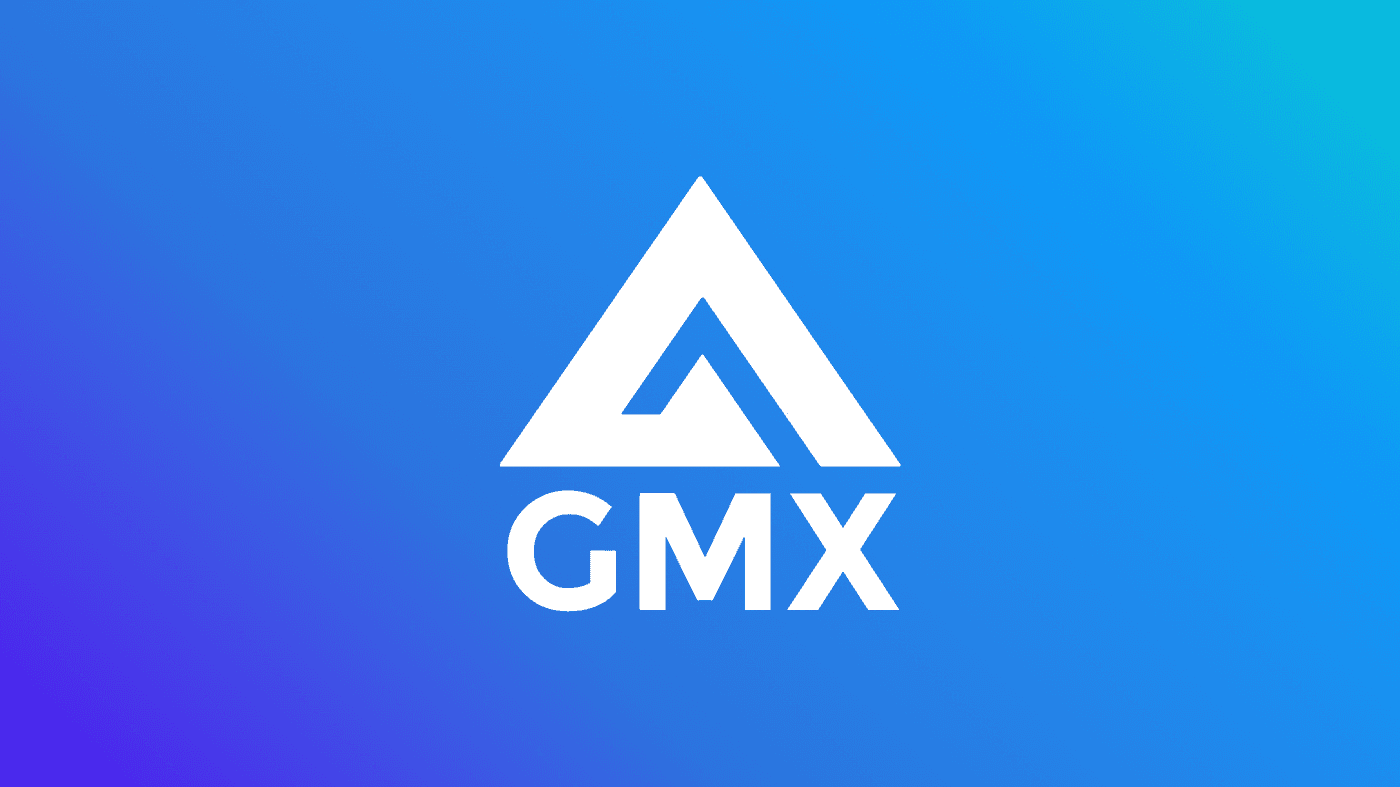
GMX
Like dYdX, GMX is a decentralized exchange designed for perpetual trading. To provide further context, GMX is an Arbitrum-focused platform and was the first DEX to allow traders to buy and sell Arbitrum’s ARB token before it went live back in early 2023.
While dYdX hosts both its native dYdX Chain and its Ethereum-Starkware Layer 2 to run its v4 and v3 platforms, the GMX chain also leverages the use of two separate exchanges that operate independently on Arbitrum and Avalanche.
This dual-platform approach shows that both projects continue to improve their service offerings, while providing two distinct user experiences and product types for different users.
Although total derivatives trading volume on GMX has been lower than dYdX of late (with most taking place on GMX V2), most on-chain GMX metrics have continued to steadily increase throughout the last several months. While significant in its own right, this shows that dYdX has a significantly larger user base overall.
GMX possesses both a basic swapping functionality and also supports leveraged perpetuals trading with up to 50x leverage. On the other hand, dYdX offers traders a maximum of 20x leverage, meaning traders with lower risk tolerance may be better suited to using dYdX.
Instead of employing a decentralized orderbook model, the GMX platform leverages a system based on multi-asset pools which allows users to provide liquidity in exchange for GLP liquidity provider (LP) tokens. In return traders are rewarded with 70% of the protocol’s revenue each time they make a transaction.
In more detail, GMX makes use of several distinct token types to support the ecosystem's overall economic model. These include:
- GMX - the platform’s governance and ecosystem utility token, GMX accrues 30% (for V1) and 27% (for V2) of generated exchange fees, which are redistributed to users for their efforts.
- GLP - a liquidity provider token supporting GMX V1, GLP tokens accrue 70% of V1’s generated fees, which are then redistributed to platform users when they use the exchange.
- GM - a liquidity provider token supporting GMX V2, GM tokens accrue 63% of V2’s generated fees, which are then redistributed to platform users when they use the exchange.
- esGMX an escrowed version of GMX, users are rewarded for using esGMS via two separate mechanisms: 1.) by staking in a similar manner to regular GMX; and 2.) through a vesting contract that allows users to exchange their esGMX for regular GMX after a one-year locked-up period that is first initiated by the user.
In addition to its unique token structure, GMX is sometimes considered more decentralized than many of its competitors because of its token model and other considerations. Nonetheless, dYdX Chain’s newly-designed community-focused governance structure and other newly-developed features also make it quite decentralized in its own right.
According to DefiLlama, dYdX does more volume than GMX, but has less total volume locked (TVL) overall. This is probably mainly because GMX shares its revenue with liquidity providers, while dYdX does not.
While GMX does have some amazing features, many consider dYdX v4 to be more advanced in many respects, although GMX offers several features that dYdX does not. That said, dYdX’s continued widespread adoption, combined with the presence of its off-chain orderbook, matching engine, and on-chain settlement layer, means its highly performant, fast, non-custodial, low-slippage design is difficult to match in industry terms.
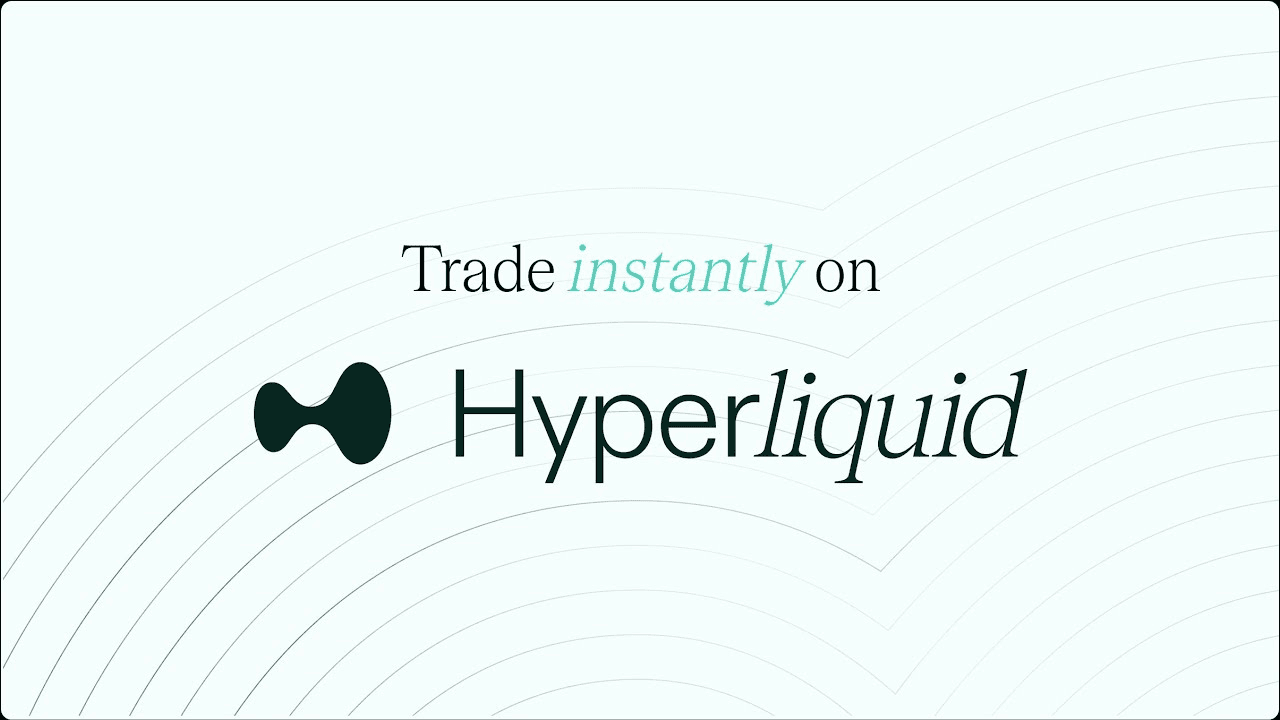
Hyperliquid
Hyperliquid is a Layer 1 blockchain optimized as the foundation for the Hyperliquid perpetual exchange. The platform is designed to operate fully on-chain and is focused on providing lightning fast performance alongside a seamless user experience.
Similarly to dYdX Chain, Hyperliquid makes use of Cosmos-enabled Tendermint BFT consensus. However, a new consensus algorithm is currently in development that will offer performance orders of magnitude stronger than its current iteration.
Like all decentralized exchanges, the Hyperliquid DEX is fully non-custodial and employs an orderbook like dYdX, therefore eliminating front running and MEV attacks that AMM-based platforms like Uniswap and others are susceptible to.
In addition to its L1 and underlying exchange, Hyperliquid leverages the utility of an EVM asset bridge, various funding mechanisms for user onboarding, API servers to increase connectivity, as well as a decentralized clearinghouse for trade management. This overall structure is designed to facilitate efficient trading, improve liquidity, and ensure robust security for end users.
The Hyperliquid team claims their blockchain is able to conduct up to 20,000 transactions per second with <0.5 second block latency. Furthermore, Hyperliquid allows up to 50x leverage (while the maximum on dYdX is 20x) and has no gas fees and minimal trading fees (maker and taker fees vary depending on total volume traded), making the exchange very inexpensive.
The DEX also allows users to make use of a wide range of order types and even offers the ability to copy the best market making strategies via specialized Hyperliquid vaults. Normally these features are only available to exchange operators and market makers, but Hyperliquid felt it was necessary to democratize their access to anyone.
To begin this process, Hyperliquidity Provider (HLP) protocol vaults are used by traders as a means to deposit liquidity into the Hyperliquid protocol, allowing them to seamlessly and securely place strategy-specific community-focused trades after they have deposited at least 100 USDC within.
This structure democratizes access to more complex trading strategies but does require a minimum 4-day lock up period prior to removing assets should the vault’s performance be subpar. By using the HLP protocol, traders receive a portion of trading fees for their efforts and share a portion of the vault’s PNL.
Hyperliquid has become a force to be reckoned with in the perpetual landscape, particularly because it offers a decentralized, adaptable, non-custodial platform with a broad focus on user asset security and performance along with numerous innovative features.
Because of these reasons and others, Hyperliquid has consistently ranked as one of the top perpetual DEXs globally in 24-hr trading volume in recent months and it seems likely this trend will continue. More specifically, according to DeFiLlama, Hyperliquid has averaged a 24/hr perpetual volume of more than 1.5 billion per day over the last several months.
Hyperliquid offers numerous features that dYdX simply does not. Nonetheless, despite their differences, both represent strong models for decentralized perpetuals exchanges in the crypto landscape.
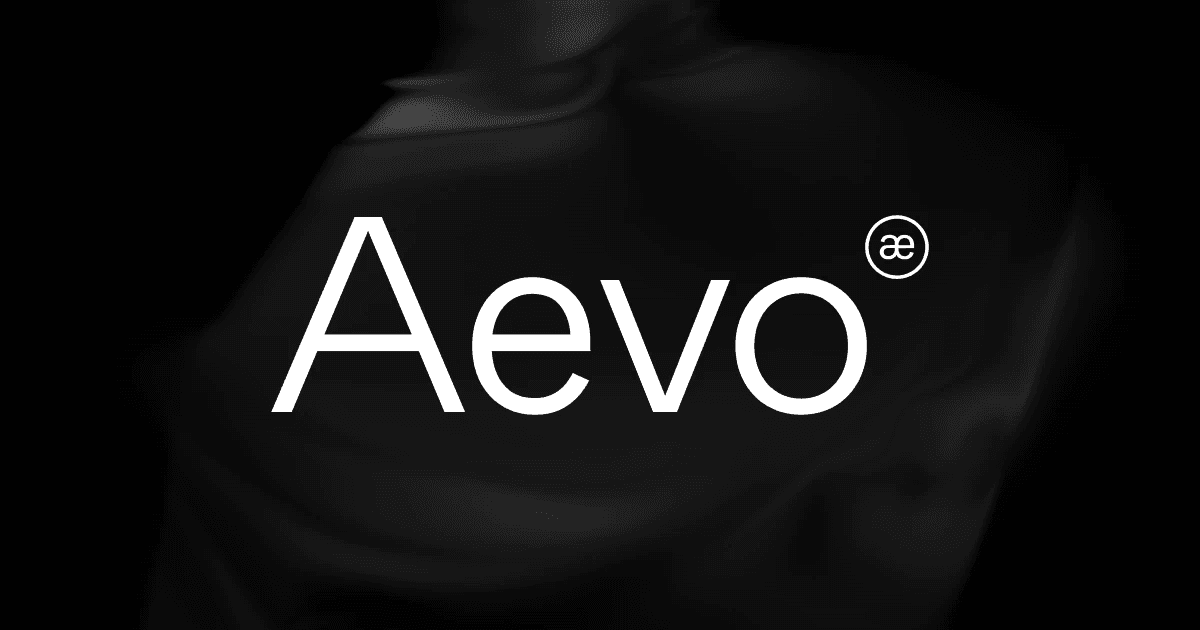
Aevo
Aevo is a newly developed Layer 2 blockchain designed to function as the back-end of the Aevo derivatives exchange platform. In recent months, Aevo has become a significant contender in the derivatives trading and DEX landscape. That said, the project only officially launched its governance and utility token in March despite the protocol being live for several months previously.
Similarly to dYdX, Aevo operates as an off-chain order book with on-chain settlement, meaning once orders are matched they are executed and settled with specialized smart contracts. However, unlike the new DYDX chain, Aveo is built to operate on Ethereum, meaning that dYdX (and its v4 exchange) is likely more performant at this time.
One of the products that garnered Aevo a vast amount of hype prior to its token release was its pre-market feature that allows investors to purchase newly hyped tokens prior to being listed on centralized exchanges such as Binance, OKX, and Coinbase.
Aevo is being used, and being used a lot, especially for such a new protocol. Though not a long-term weighted metric, as an example, Aevo’s trading volume for March 26th, 2024 was nearly 425 million dollars over a 24/hr period.
Aevo is co-built by Ribbon Finance, a money market and yield generation platform that specializes in decentralized options vaults and lending, meaning the protocol offers some features that dYdX doesn’t.
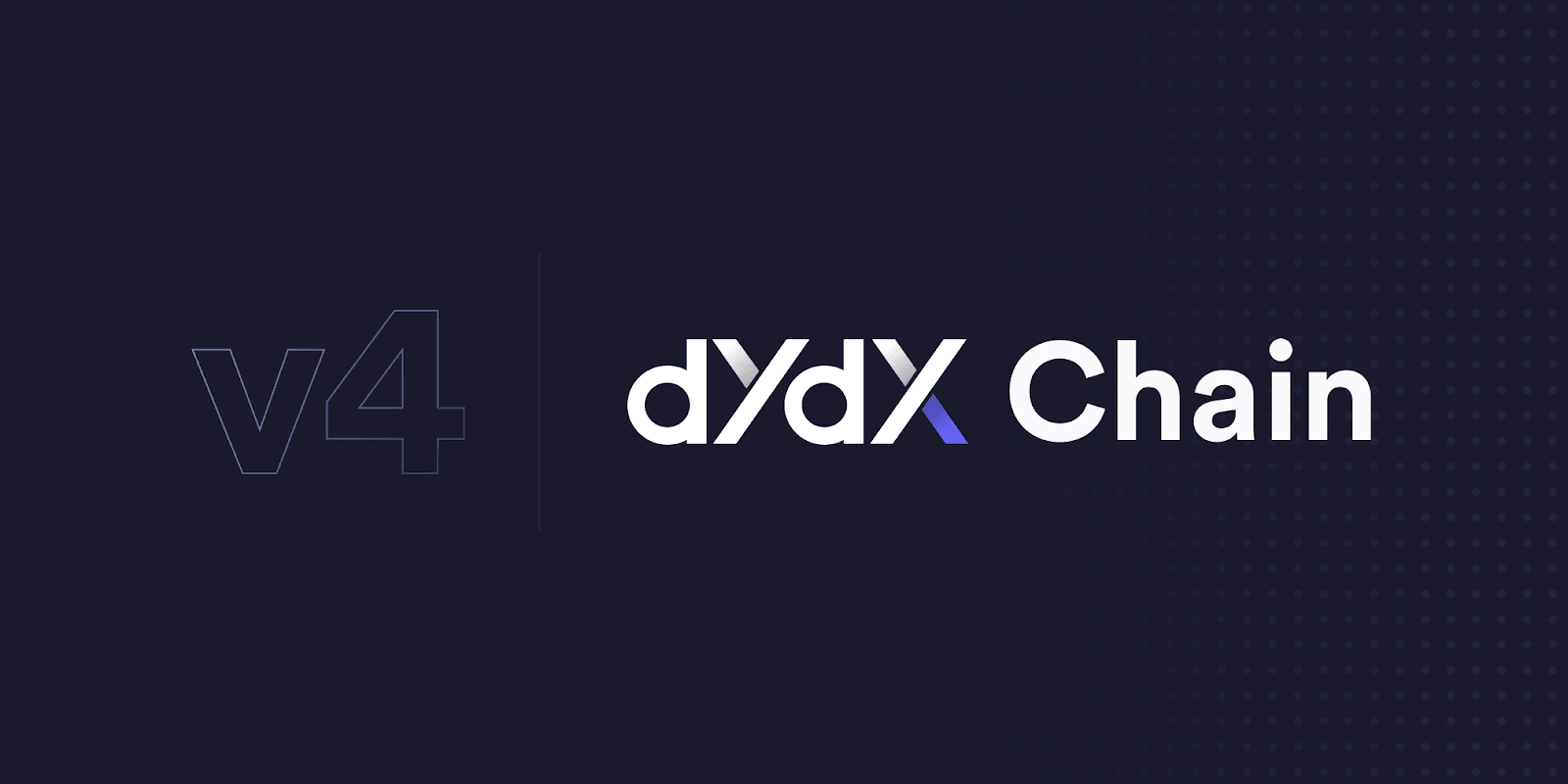
The Future of dYdX
The blockchain movement and its mission to create a more equitable, freer, and just financial system is just beginning. It's our duty to fight back against the unethical practices of corrupt enterprises, governments, and politicians to give all of us a chance at a better future.
To support us on this journey, dYdX represents an advanced paradigm for decentralized trading, especially as a means to trade perpetual swaps and other derivatives instruments. The journey for dYdX to achieve its current state has been long and arduous, but has resulted in one of the most well-used and widely-respected decentralized exchanges in the crypto industry.
With the recent launch of the Cosmos-enabled DYDX Chain, the developers of dYdX have laid an extremely strong foundation for the continued success of the platform. dYdX Chain’s focus on user experience, decentralization, security, and the development of highly performant infrastructure bodes well for the project's continued success moving forward.
Moreover, with the recent launch of its new tokenized unit of value, and the implementation of a more advanced user-controlled governance system, community members will have more say in the trajectory of the platform as it evolves over time. This signals that the developers of the project truly value the contributions and support of their users and that they envision dYdX as a programmable public good that should be widely used by all.
In addition, the team’s ability to continuously pivot to adapt to more current product-market fit environments, signals that dYdX is a force to be reckoned with long-term. Therefore, for these and many other reasons, it seems inevitable that dYdX will continue to be one of the most widely used derivatives exchange platforms in the blockchain sector for the foreseeable future.
Despite the absence of equitable regulatory guidelines, limited mainstream user adoption, and other challenges, crypto and open public blockchain systems like dYdX and others are poised to continue their massive expansion moving forward.
Resources
The information provided by DAIC, including but not limited to research, analysis, data, or other content, is offered solely for informational purposes and does not constitute investment advice, financial advice, trading advice, or any other type of advice. DAIC does not recommend the purchase, sale, or holding of any cryptocurrency or other investment.
